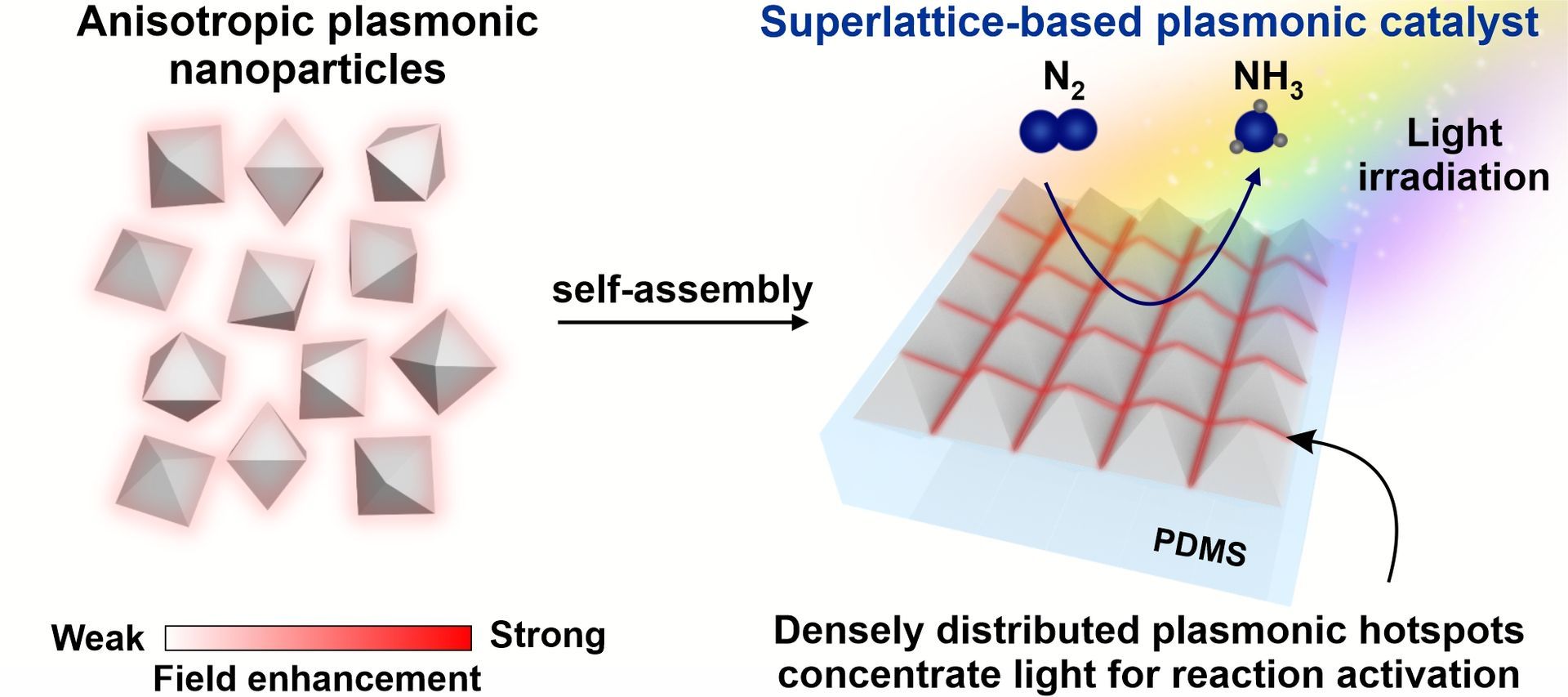Nanocatalysis for Energy and Environmental Applications
Nanocatalysis leverages materials with dimensions on the nanometer scale to drive catalytic processes. These materials exhibit unique properties, driven by their high surface area-to-volume ratio and nano/quantum size effects. However, nanocatalytic processes are still limited by inefficient energy conversion, poor catalyst-reactant interactions especially at dilute concentration, and weak intrinsic catalytic activities. Here, we are interested in exploring novel nanocatalytic designs, spanning from individual particles to ensembles, to realize efficient photocatalysis, electrocatalysis, and photoelectrocatalysis. These emerging designs hold tremendous promise for transforming energy and environmental technologies, providing sustainable solutions to pressing societal challenges such as energy resource depletion, climate change, and pollution. Our group employs three primary approaches to achieve efficient nanocatalysis.
- Concentrating Energy
Relevant Publications
- Harmonizing Plasmonic and Photonic Effects to Boost Photocatalytic H2 Production over 550 mmol·h-1·gcat-1. Angew. Chem. Int. Ed., 2024, 63, e202401277
- Catalyst-on-hotspot nanoarchitecture: Plasmonic focusing of light onto co-photocatalyst for efficient light-to-chemical transformation. Small, 2024, 20, 2309983
- Superlattice‐based plasmonic catalysis: Concentrating light at the nanoscale to drive efficient nitrogen‐to‐ammonia fixation at ambient conditions. Angew. Chem. Int. Ed., 2023, 62, e202216562
- “Introducing...”. Angew. Chem. Int. Ed., 2023, 62, e20230008
- Concentrating Molecules
Relevant Publications
- Nanoscale Stirring at Liquid-Liquid Interface: Interfacial Nano-Vortexer Actively Converges Immiscible Biphasic Reactants for Enhanced Phase-Transfer Catalysis. J. Mater. Chem. A, 2024, 12, 7279
- Surface-degenerate semiconductor photocatalysis for efficient water splitting without sacrificial agents via a reticular chemistry approach. Angew. Chem. Int. Ed., 2023, 135, e202313695
- Applying magnetic-responsive smart nanocatalyst-liquid interface for active molecule manipulation to boost catalysis beyond diffusion limit. ChemCatChem, 2022, 14, e202200036
- Functional Nanocatalytic Interface
Relevant Publications
- Effective interfacing of surface homojunctions on chemically identical g-C3N4 for efficient visible-light photocatalysis without sacrificial agents. Small, 2024, 20, 2400780
- Catalyst-on-hotspot nanoarchitecture: Plasmonic focusing of light onto co-photocatalyst for efficient light-to-chemical transformation. Small, 2024, 20, 2309983
- In situ reversible assembly of atomic interfacial structure in BiOI/Bi5O7I p-n heterojunctions to promote visible-light photocatalysis. Chem. Eng. J., 2024, 481, 148350
- Surface-degenerate semiconductor photocatalysis for efficient water splitting without sacrificial agents via a reticular chemistry approach. Angew. Chem. Int. Ed., 2023, 135, e202313695
Molecular Toolkits to Boost Materials Performance beyond Their Intrinsic Properties
Material properties are usually modulated and enhanced by controlling their chemical, physical, and structural characteristics. However, these conventional material-based approaches have limitations, capping material performance. Here, our focus in on integrating functional molecules onto material surfaces to explore their impact on interactions with the surrounding chemical environment (e.g., water hydrogen bonding network if immersed in water). Our unique approach manipulates material-environment interactions directly at the point-of-contact, promising a performance boost beyond intrinsic material properties. We envision the parallel advancement in (1) functional surface chemistry and (2) materials engineering is crucial for accelerating progress in various applications, such as photothermal steam generation and green chemical fuel production.
Relevant Publications
- Chaotropic nanoelectrocatalysis: Chemically disrupting water iIntermolecular network at the point-of-catalysis to boost green hydrogen electrosynthesis. Angew. Chem. Int. Ed., 2024, 63, e202317751
Dynamic Miniature Platforms for Multiphasic Applications:
Green Chemical Reactions and Ultratrace Molecular Sensing
The rapid delivery of reactants/molecules/analytes to target sites plays a crucial role in driving efficient chemical reactions, decontamination processes, and molecular enrichment. However, the use of conventional homogenization methods proves ineffective for swift and precise mass manipulations. Here, we focus on designing miniature platforms/devices that dynamically interact with exterior liquid environments to rapidly pull and arrest molecules from bulk solutions. Our aim is to apply these miniature platforms for multiphasic applications, focusing on driving liquid-liquid reactions (e.g., phase-transfer catalysis) as a greener synthetic approach and accumulating molecules against their concentration gradient for ultratrace molecular detection.
Relevant Publications
- Magnetic hydrogel microbots for efficient pollutant decontamination and self-catalyzed regeneration in continuous flow systems. Small, 2024, Early View
- Spinnable hydrogel marbles: A dynamic miniature molecule concentrator for efficient water decontamination and colorimetric detection. Chem. Eng. J., 2024, 480, 148132
- Nanoscale Stirring at Liquid-Liquid Interface: Interfacial Nano-Vortexer Actively Converges Immiscible Biphasic Reactants for Enhanced Phase-Transfer Catalysis. J. Mater. Chem. A, 2024, 12, 1279
- Dynamic liquid-liquid interface: Applying a spinning interfacial microreactor to actively converge biphasic reactants for the enhanced interfacial reaction. ACS Appl. Mater. Interfaces, 2022, 14, 39
- Applying magnetic-responsive smart nanocatalyst-liquid interface for active molecule manipulation to boost catalysis beyond diffusion limit. ChemCatChem, 2022, 14, e202200036




